I wasn’t sure whether to continue this thread or start a new one, but it seemed logical to continue this one. I’ve started incorporating the minehead and hoist into a Mining District on my railroad. I found a good spot for it high up in one corner, and the minehead and hoist sit on a triangular base, a shelf basically, which is removable in and out. Then I added a mining office below and there’ll be steps going up to the mine itself. Also I added a tunnel that goes under the district to a fictional mine ore processing center. The raw ore will slide down shutes directly into the mine cars.
Anyway, here are more pictures than you’d probably care to look at, but what the heck.
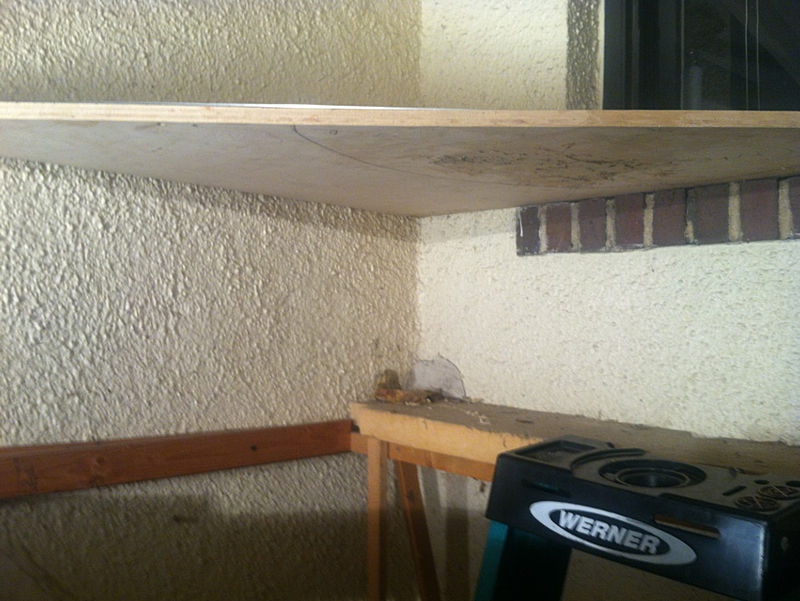
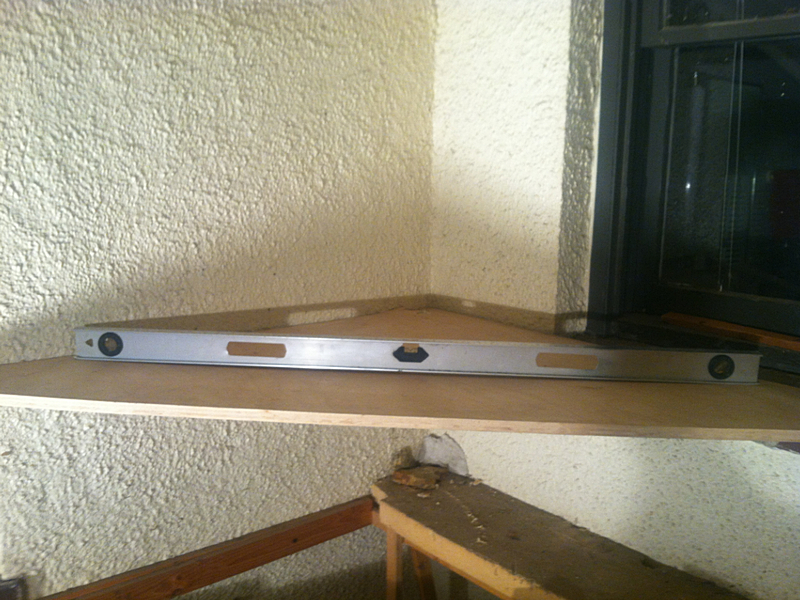
This is the initial placement of the minehead and the hoist, with the minehead sitting on higher “ground.” I am using four-inch deep industrial insulation which I salvaged from a roof tear-out down the street from my shop. I got several hundred dollars worth of this stuff in eight-foot panels for FREE…those roofing guys were more than happy to have me haul it away and keep it out of their roll-off>>>>>>>>>I made a HOME RUN on this one!!!
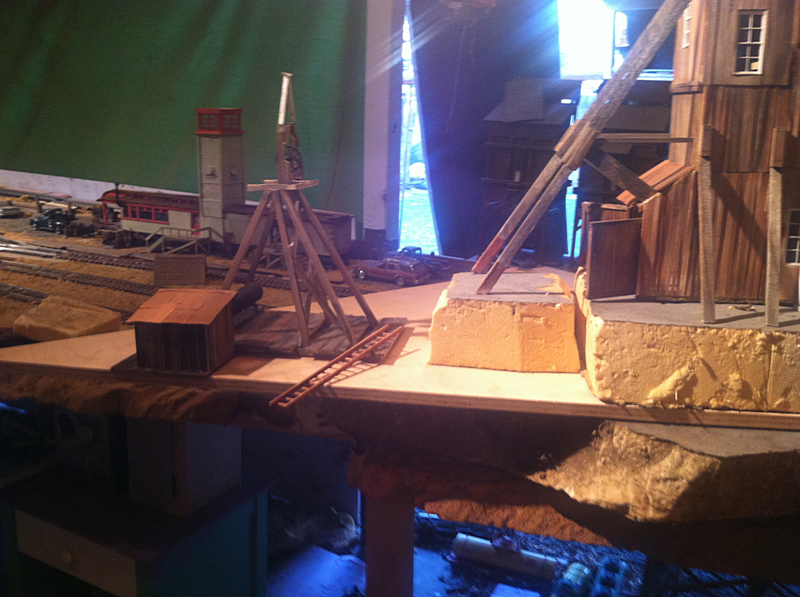
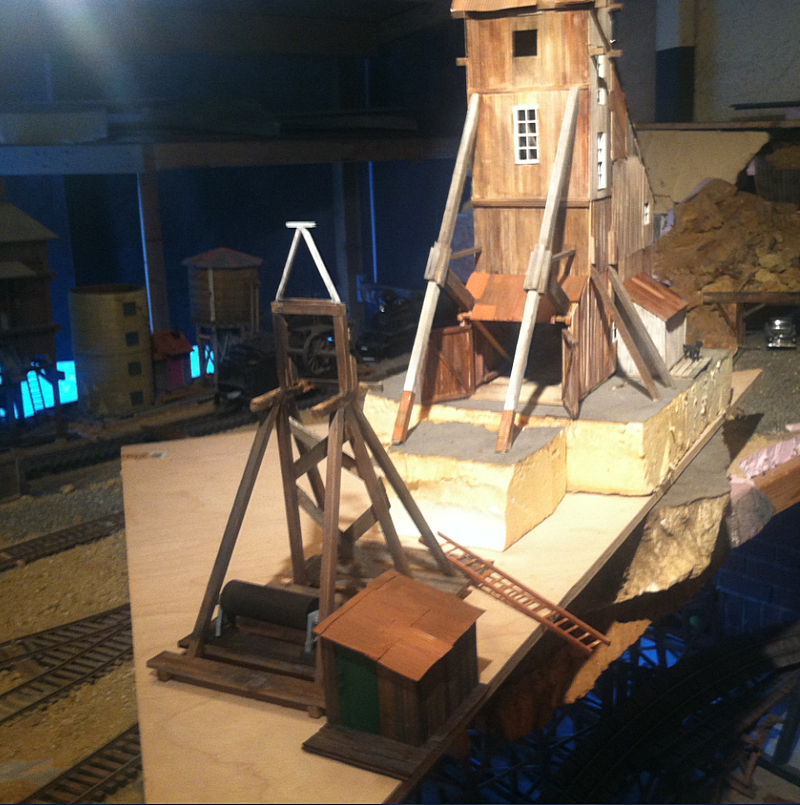
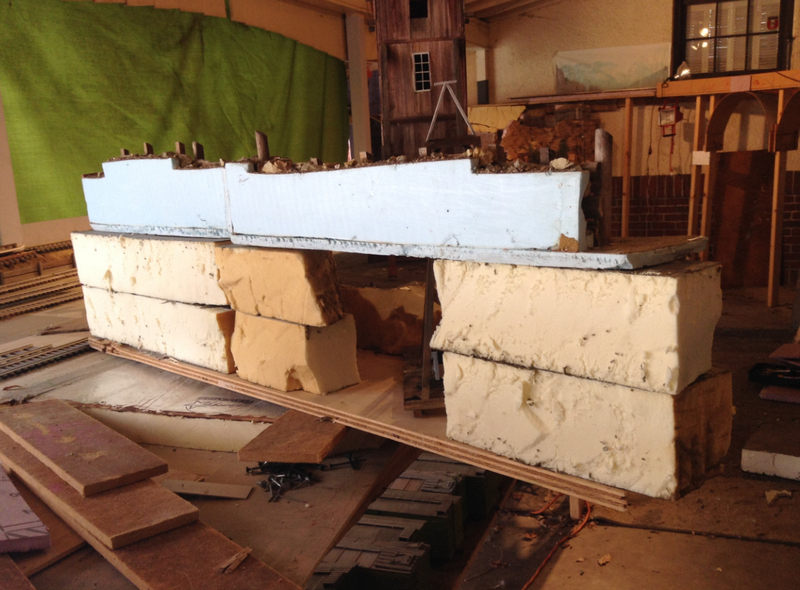
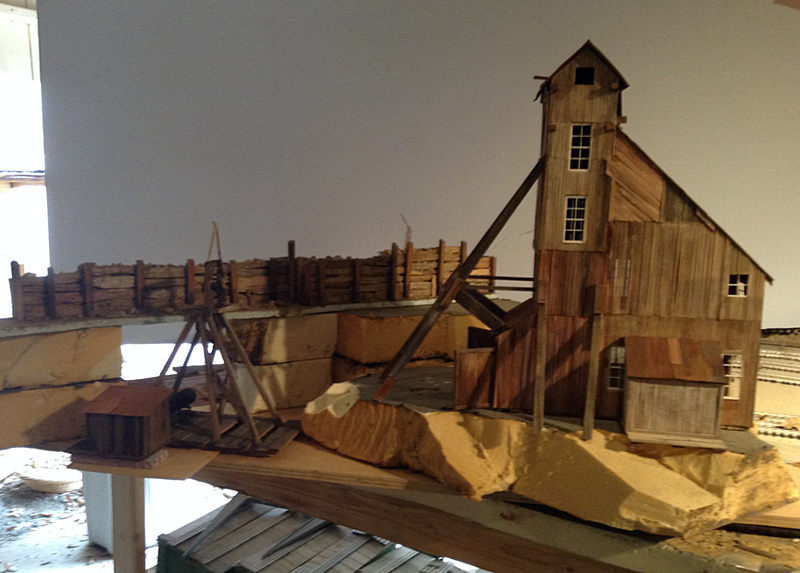
I made a retaining wall for the limit of the district out of pieces of mulch/wood I found by picking through the mulching at the dog park, then glued it all down on a 1/2" base of blue insulation foam.

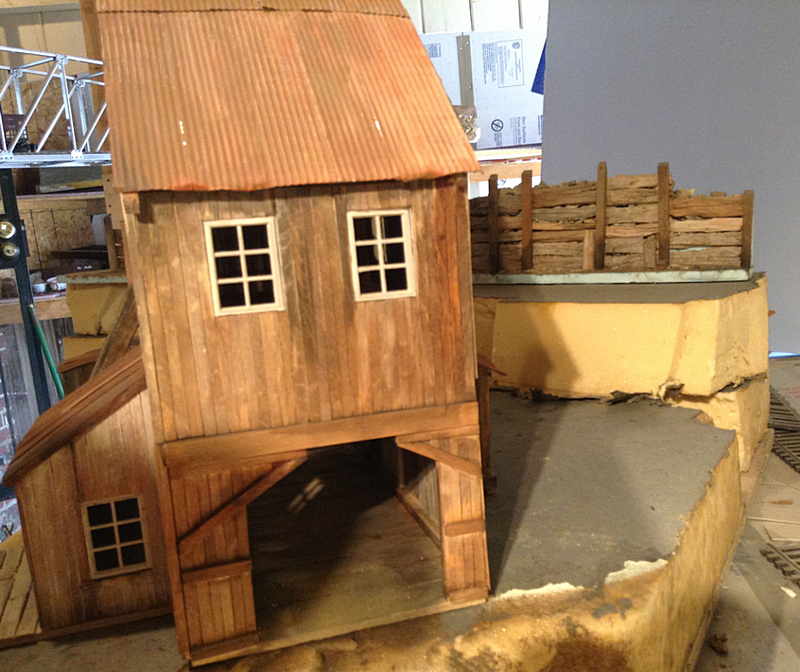
Then here is the “shelf” for the mine office. There is a curved bridge that goes in front of this mining district, but I removed it temporarily to make this build. The mine office will connect with the bridge once the bridge is back in place.
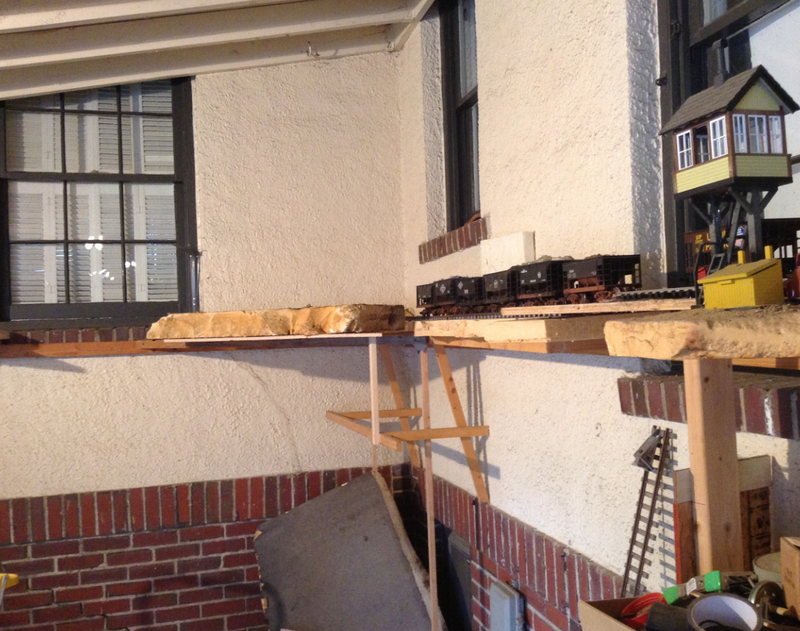
You can see the bridge leaning up against the tracks on the right, and here’s the basic layout of the district.
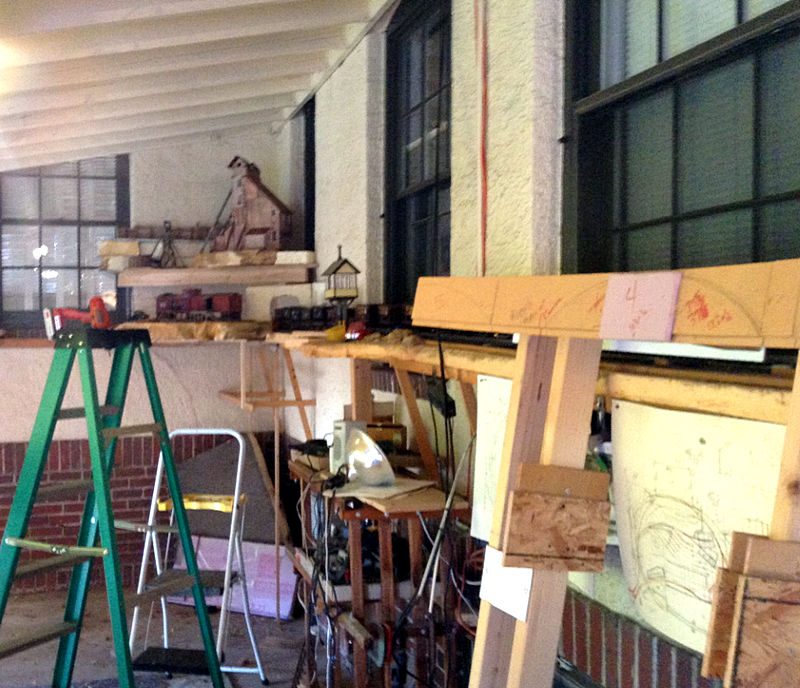
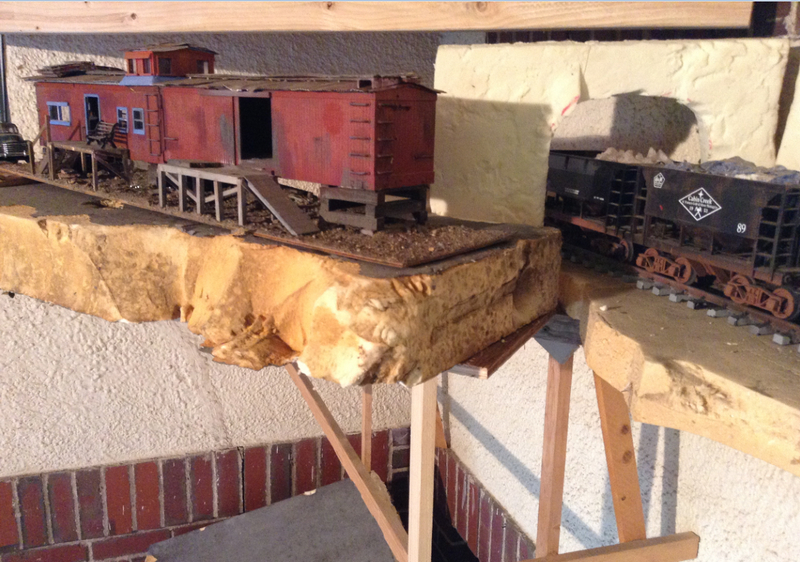
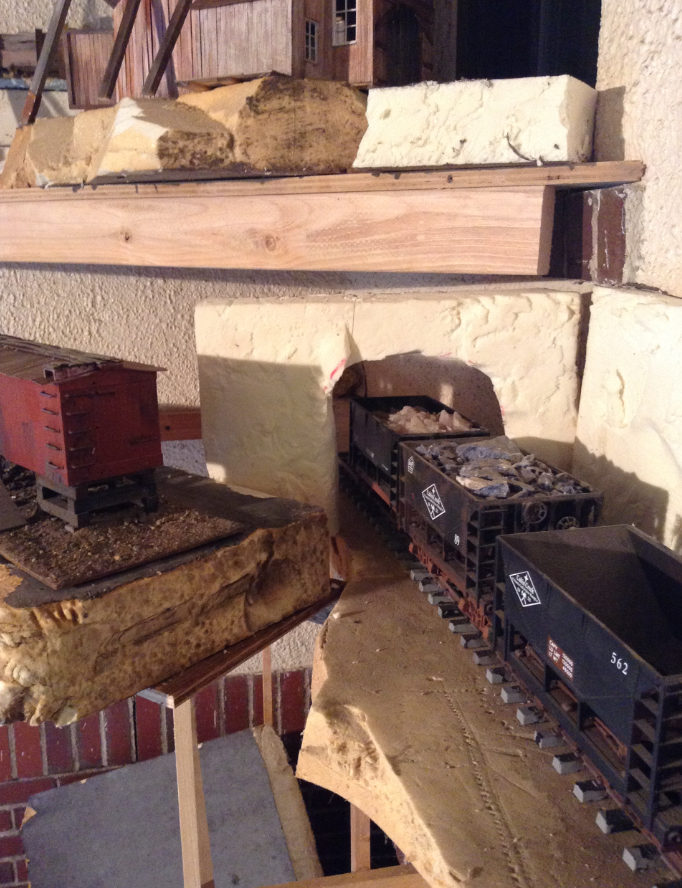
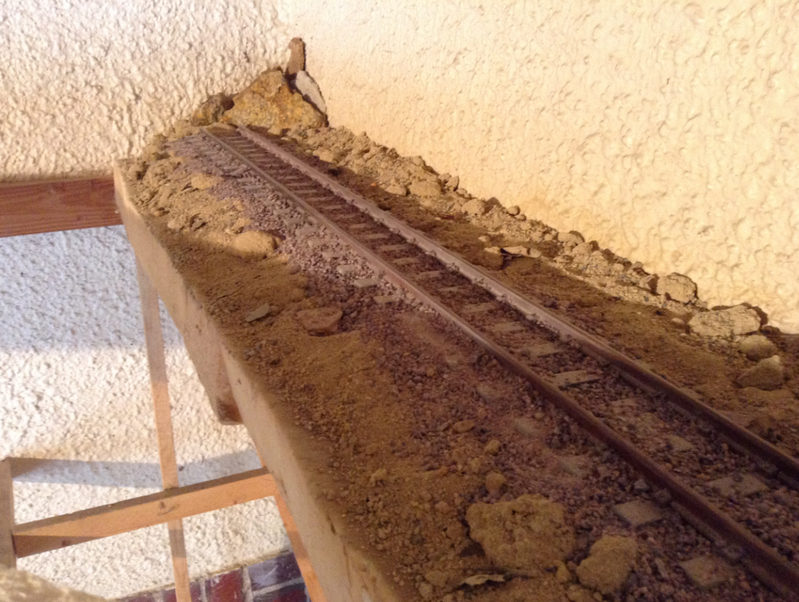
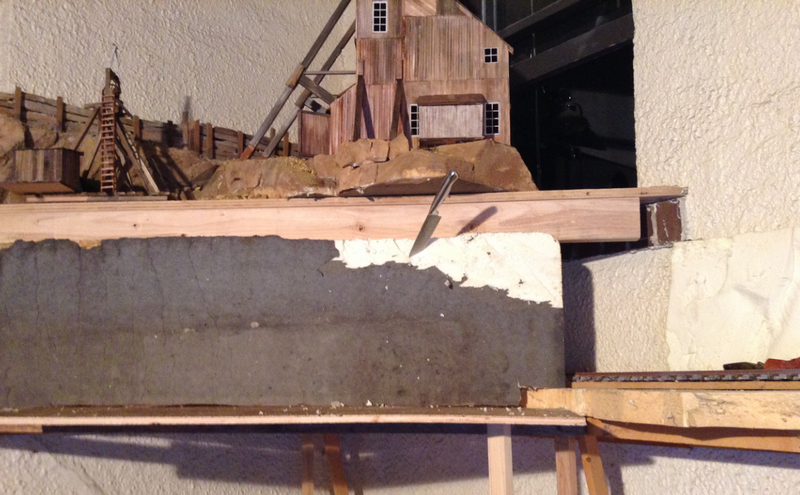
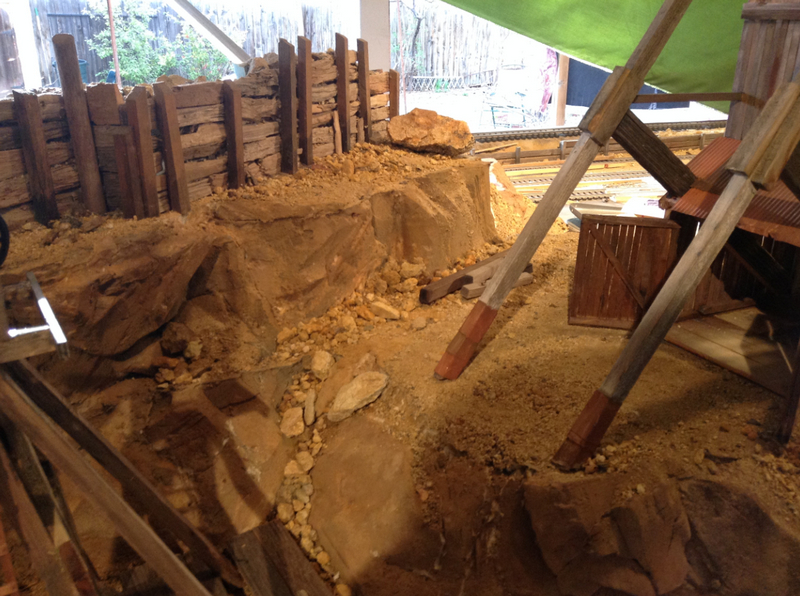
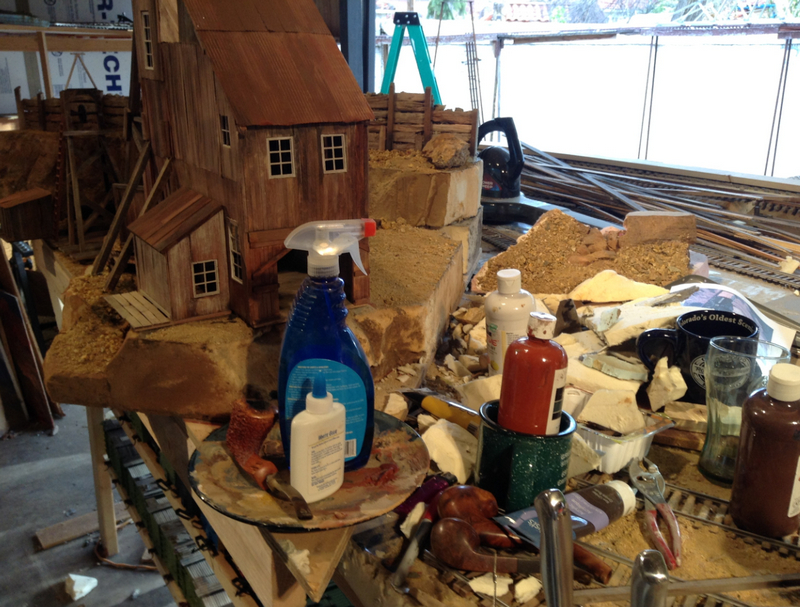
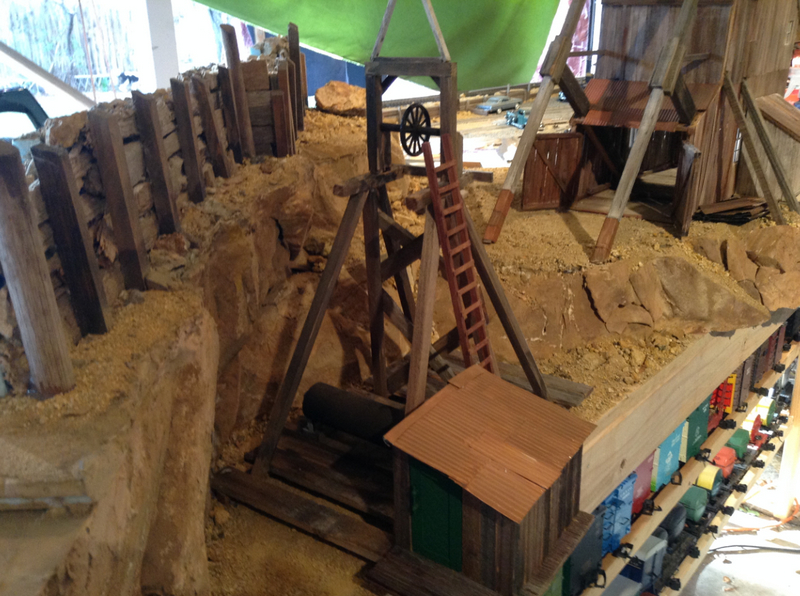
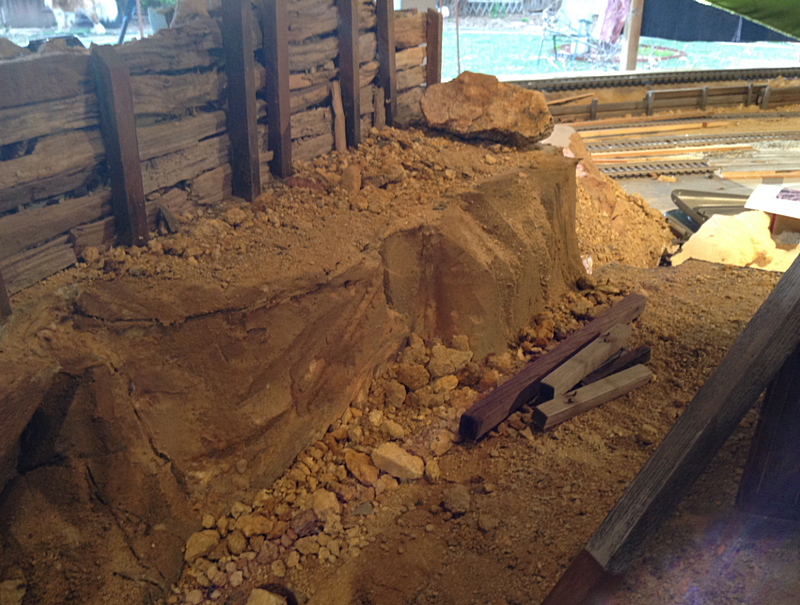
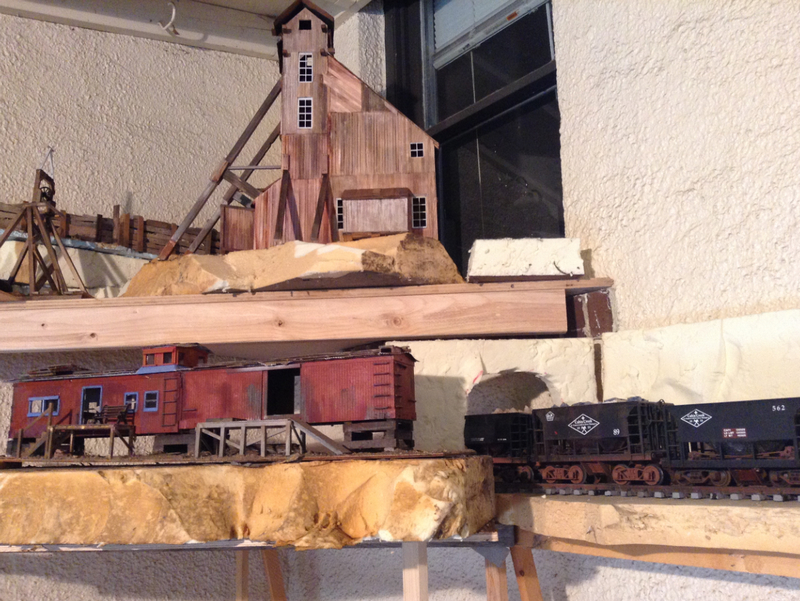
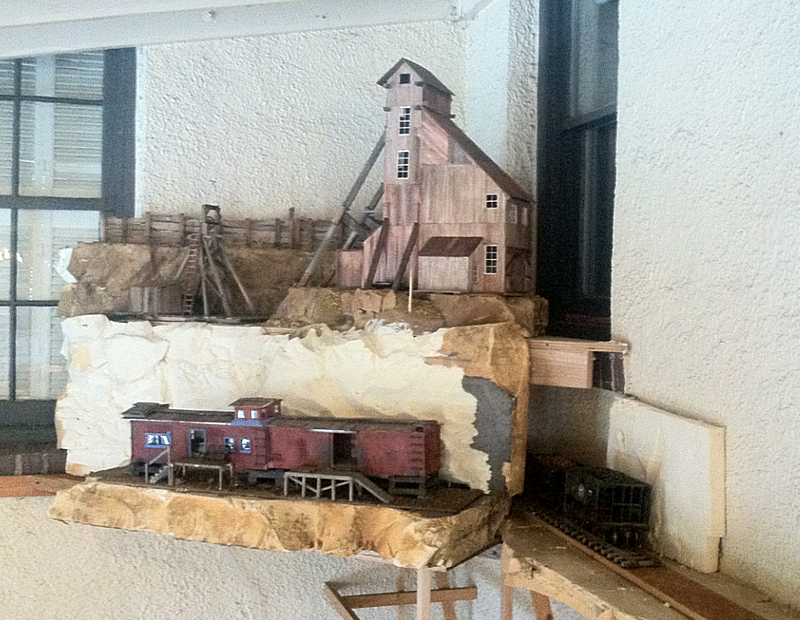
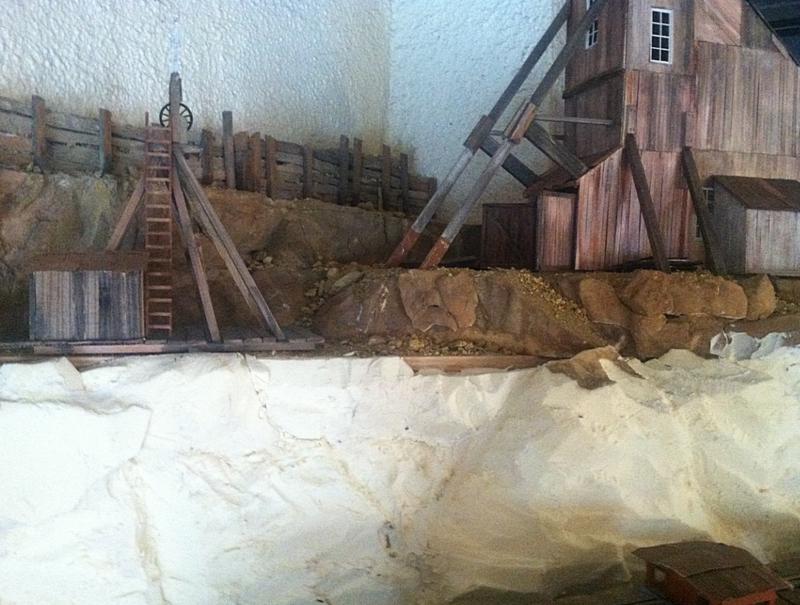
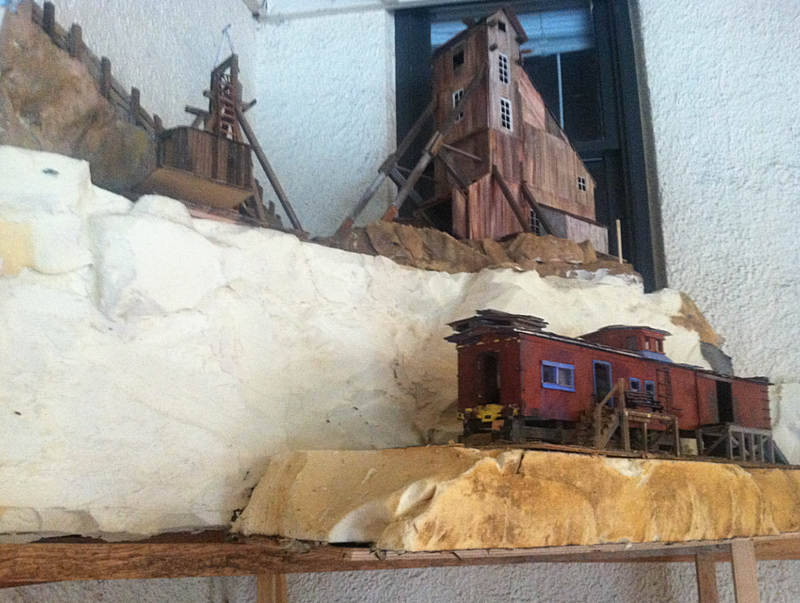
So that’s as far as I’ve gotten. There is so much to do it isn’t even funny. My rock painting really sucks big time right now, not even close to what I wanted. The minehead needs an inner walling to prevent light from leaking out. And there’s a hundred other things to do. But at least I got a start and it’s all in place in a good spot on the layout.
Thanks for taking a look at these too-many photos, and if you have any suggestions, don’t be shy.
edit: like you guys are shy! Ha!